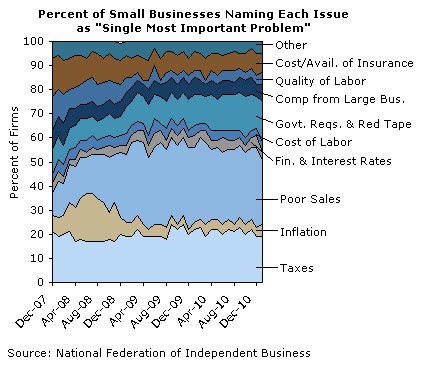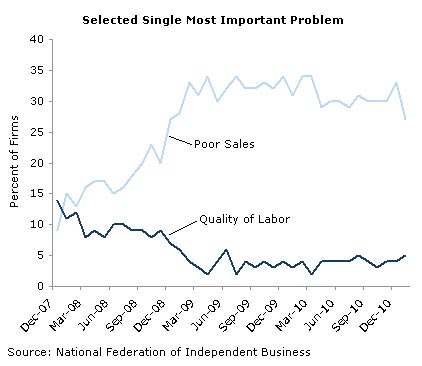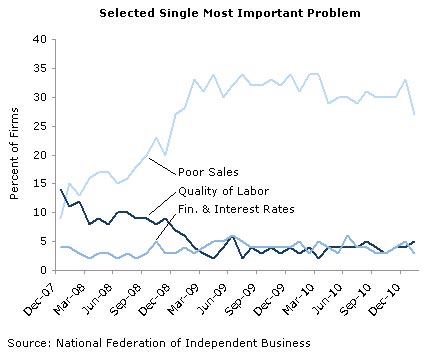March 02, 2011
Structural unemployment – unemployment stemming from a mismatch of workers’ skills and job requirements – has been cited in mainstream media as the main cause of current, high unemployment. Data from the National Federation of Independent Business (NFIB), however, suggest that structural unemployment is not what is ailing the economy. The graph below draws on data from the NFIB’s monthly survey from December 2007 (the official start of the recession) to January 2011. Each month, the NFIB asks its sample of small businesses to state the single most important problem facing their business today. Since the recession began, respondents overwhelmingly have cited “poor sales,” suggesting that today’s unemployment is primarily due to a lack of demand. “Quality of labor,” the factor most consistent with structural unemployment, barely made the list.

In fact, as the recession deepened, “poor sales” became increasingly important, while “quality of labor” was cited less and less often. Furthermore, through an analysis of the NFIB data, we looked at the indicators that had the largest increase since and decrease since 2007, and they ended up being “poor sales” and “quality of labor” respectively. These findings suggest that the current, high unemployment is indeed cyclical and not structural.

The NFIB data also call into question another common explanation for the continuing weak economy: the lack of access to credit. “Finance and Interest Rates” has never been the main problem facing more than five percent of small businesses. It should be noted that the larger firms that dominate the economy are able to borrow directly on financial markets at historically low interest rates, so finance is clearly not a problem for them.
To conclude, the NFIB data show that the current, high unemployment we are experiencing is due to cyclical, not structural factors. According to Keynes, the solution to decreased demand as exhibited by “poor sales” is more government spending, not less.







